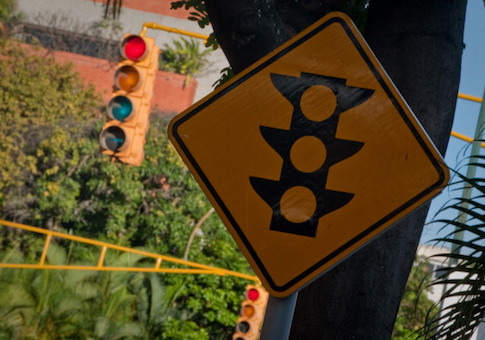Proposed legislation permitting local law enforcement to issue traffic citations based on images taken by red light cameras did not make it past the Senate Growth and Infrastructure Committee this week, which is a good thing, the Nevada Policy and Research Institute (NPRI) argues because studies prove they don’t work.
A similar version of this year’s SB43 to allow Automatic Traffic Enforcement Systems was proposed 10 years ago. It was killed by Sen. Kelvin Atkinson, D-North Las Vegas, who is now the Senate Majority Leader and who still opposes the measure.
Amy Davey of the Office of Traffic Safety says the bill authorizes local jurisdictions to decide if they want to install camera systems and local communities would have oversight of installation and enforcement. The bill specifically limits traffic citations to traffic light violations and speeding.
"Study after study has demonstrated that traffic cameras, while increasing revenue for local jurisdictions, do little or nothing for public safety," Michael Schaus, communications director at NPRI, told Watchdog.org. "Time and again, these cameras have proven to be ripe for abuse by law enforcement and government jurisdictions, often targeting low-income neighborhoods and actually increasing the public safety hazard citizens face in some cases. It's for this reason that states like Florida and Colorado are even considering outright bans."
According to the Insurance Institute for Highway Safety Highway Loss Data Institute, 388 communities have red light camera programs as of February 2019; 137 communities have speed camera programs as of February 2019. This includes statewide work zone programs in Illinois, Maryland and Oregon.
These numbers are down from 2010-2017 when more than 438 U.S. municipalities, including 36 of the 50 most populous cities, implemented electronic monitoring programs, the institute reports. The stated purpose of the programs was to reduce the number of accidents by specifically targeting drivers who run red lights.
Chuck Callaway of the Metropolitan Police and Eric Spratley of the Nevada Sheriff's and Chiefs Association support the measure. Callaway told the committee that each camera image would be reviewed by a police officer in order to determine whether issuing a citation was warranted.
Callaway and Davey argue installing the cameras would be "a last resort" after police’s preventative efforts at dangerous intersections appeared unsuccessful.
But Schaus argues, "Nevada lawmakers shouldn't burden Nevadans with so-called ‘public safety’ policies that are ripe for abuse and do nothing to actually improve public safety."
He points to a study conducted by economists Justin Gallagher at Case Western Reserve University Weatherhead School of Management, and Paul J. Fisher, University of Arizona, who "found no evidence that red light cameras improve public safety."
The researchers examined all police-recorded traffic accidents for three large Texas cities over a 12-year period, which included hundreds of thousands of accidents. They concluded that red light cameras "don’t reduce the total number of vehicle accidents, the total number of individuals injured in accidents or the total number of incapacitating injuries that involve ambulance transport to a hospital."
One city they evaluated was Houston, which operated an extensive camera program at 66 intersections between 2006 and 2010. The program was ended by a voter referendum in 2010.
Gallagher and Fisher accessed detailed accident information on every traffic accident over a specific time period before and after the cameras were installed. They found that when the cameras were removed, angle accidents increased by 26 percent, but all other types of accidents decreased by 18 percent.
"Our study showed no evidence that cameras reduce the total number of accidents," the authors write. "There’s no evidence that the camera program reduced the number of traffic-related injuries or the likelihood of incurring an incapacitating injury."
While traffic accidents at urban intersections remain a serious public health issue, the authors write, their analysis found that Houston’s camera program was ineffective in improving traffic safety.
"Electronic monitoring is not the solution," they conclude.
